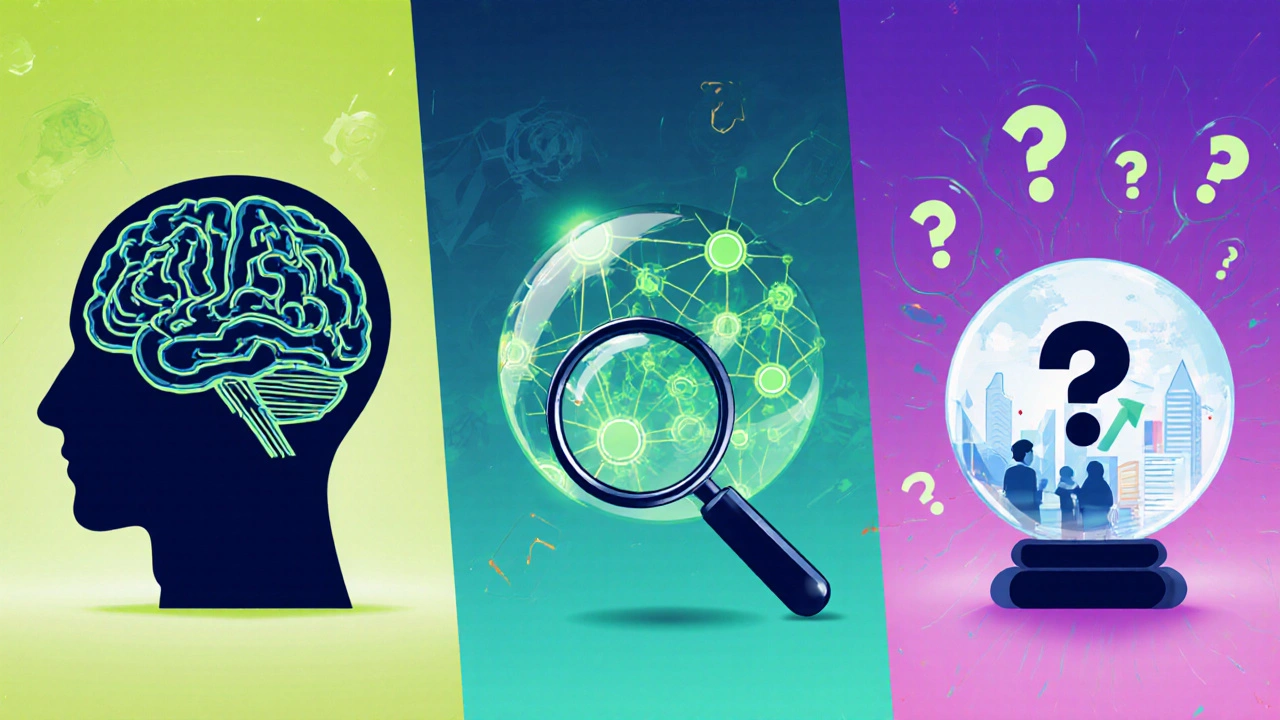Level 3 Thinker Assessment
Answer the following questions to determine your current thinking level and identify areas for improvement.
Level 1: Surface Thinking
Focuses on immediate facts and simple solutions
Level 2: Contextual Thinking
Considers limited context and 'what' factors
Level 3: Strategic Thinking
Synthesizes complex information and plans ahead
Your Thinking Level Analysis
Ever wondered why some people seem to cut through complexity like a hot knife through butter? The secret often lies in the way they think. Understanding the difference between a casual thinker and a strategic thinker can change how you solve problems at work, study for exams, or navigate everyday decisions.
What Is a Level 3 Thinker?
Level 3 thinker is a person who consistently operates at the highest tier of conscious reasoning, weaving together facts, context, and future implications to create nuanced solutions. Unlike surface‑level analysis, a Level 3 thinker engages in deep synthesis, questions underlying assumptions, and anticipates ripple effects before acting.
Core Traits of a Level 3 Thinker
- Systems awareness - they see how parts interrelate within a larger whole.
- Metacognitive control - they monitor their own thinking process and adjust strategies on the fly. Metacognition refers to thinking about thinking, a skill that lets individuals evaluate the effectiveness of their mental approaches and pivot when needed.
- Evidence‑first mindset - conclusions are rooted in data, not gut feeling.
- Future orientation - they predict outcomes several steps ahead.
- Adaptive curiosity - they ask “why” until the root cause surfaces.
How Level 3 Thinking Differs from Levels 1 & 2
| Aspect | Level 1 | Level 2 | Level 3 |
|---|---|---|---|
| Depth of analysis | Surface facts only | Limited context, mostly “what” | Deep synthesis, “why” and “what‑if” |
| Decision speed | Fast but error‑prone | Moderate, with occasional re‑check | Deliberate, balanced with intuition |
| Use of metacognition | Rare | Occasional self‑questioning | Continuous self‑monitoring |
| Systemic view | Isolated elements | Some connections recognized | Holistic network perspective |
| Typical outcome | Short‑term fixes | Mid‑term improvements | Long‑term, scalable solutions |

Benefits of Becoming a Level 3 Thinker
When you upgrade your thinking to Level 3, several concrete advantages emerge:
- Higher problem‑solving success rate - you spot hidden constraints before they become roadblocks.
- Better decision confidence - your choices are backed by a clear rationale, reducing second‑guessing.
- Improved relationships - you understand others’ perspectives, leading to clearer communication.
- Career acceleration - employers value strategic thinkers for leadership roles.
- Personal resilience - anticipating outcomes helps you prepare for setbacks.
Developing Level 3 Thinking Skills
Growing your thinking isn’t a magic switch; it’s a practice. Below is a step‑by‑step method that blends proven techniques from cognitive science and adult learning.
- Adopt a growth mindset. Growth mindset describes the belief that abilities can be developed through effort, strategy, and feedback. Remind yourself daily that thinking ability is trainable.
- Build a habit of questioning assumptions. When faced with a claim, ask, “What evidence supports this?” and “What could we be missing?” Write answers in a dedicated notebook.
- Practice metacognitive reflection. After completing a task, spend five minutes asking: “Did my approach work? Why or why not?” Record insights to refine future strategies.
- Study Bloom’s taxonomy. Bloom's taxonomy is a framework that categorises learning objectives from simple recall to creative synthesis. Aim to operate at the “Analyze”, “Evaluate”, and “Create” levels rather than just “Remember” or “Understand”.
- Engage in multidisciplinary reading. Mix technical articles with philosophy, economics, and design thinking. The cross‑pollination of ideas expands your mental models.
- Use the “Five Whys” technique. For any problem, ask “Why?” five times in a row. This uncovers root causes and forces you beyond surface explanations.
- Simulate future scenarios. Sketch out best‑case, worst‑case, and most likely outcomes for decisions. This trains your brain to anticipate ripple effects.
Common Pitfalls & How to Avoid Them
Even seasoned thinkers slip into shortcuts. Recognise these traps early:
- Analysis paralysis. Getting stuck in endless data collection. Counteract by setting a strict time limit for information gathering.
- Confirmation bias. Favoring evidence that supports your pre‑existing view. Actively seek disconfirming data.
- Over‑reliance on intuition. Gut feelings are useful but must be verified with logic. Pair intuition with a quick pros‑cons list.
- Neglecting mental fatigue. High‑level thinking is energy‑intensive. Schedule deep‑thinking sessions when you’re most alert (often morning).

Real‑World Example: From Manager to Strategic Leader
Jane, a mid‑level project manager at a tech firm, struggled with recurring deadline overruns. Initially, she focused on task‑by‑task tracking (Level 1). After a workshop on metacognition, she started mapping project dependencies, questioning resource assumptions, and running “what‑if” simulations for each milestone. Within three months, her team delivered 20% faster, and senior leadership invited her to lead a cross‑functional initiative. Jane’s evolution mirrors the transition to Level 3 thinking: from fixing symptoms to redesigning the system.
Key Takeaways
- A level 3 thinker integrates data, context, and future impact to craft robust solutions.
- Core traits include systems awareness, metacognitive control, and evidence‑first mindset.
- Compared to Levels 1 and 2, Level 3 thinking offers deeper analysis, holistic views, and long‑term outcomes.
- Develop the skillset through growth mindset, questioning assumptions, metacognitive reflection, and scenario simulation.
- Avoid analysis paralysis, confirmation bias, and mental fatigue to stay effective.
Frequently Asked Questions
Can anyone become a Level 3 thinker?
Yes. Thinking ability is not fixed; it develops through deliberate practice, feedback, and exposure to diverse perspectives. The steps outlined above provide a roadmap for anyone willing to invest time.
How long does it take to reach Level 3 thinking?
The timeline varies. Some people notice a shift after a few weeks of focused training; others may take months or years, depending on prior habits and the intensity of practice.
Is Level 3 thinking the same as being smart?
Not exactly. Intelligence provides raw cognitive capacity, while Level 3 thinking is about how you apply that capacity-organising, questioning, and synthesising information strategically.
What tools can help develop Level 3 thinking?
Mind‑mapping software, concept‑crawling worksheets, and digital notebooks (e.g., Notion) are useful for visualising connections and tracking metacognitive reflections.
How does Level 3 thinking relate to cognitive development?
It aligns with the upper stages of cognitive development, where abstract reasoning, planning, and self‑regulation mature. Adults can still advance by engaging in higher‑order tasks.






